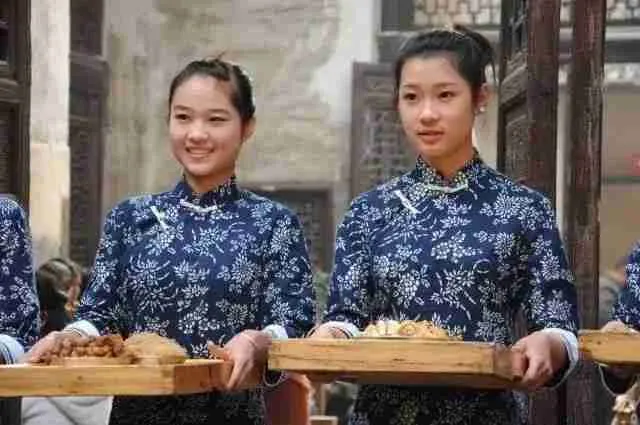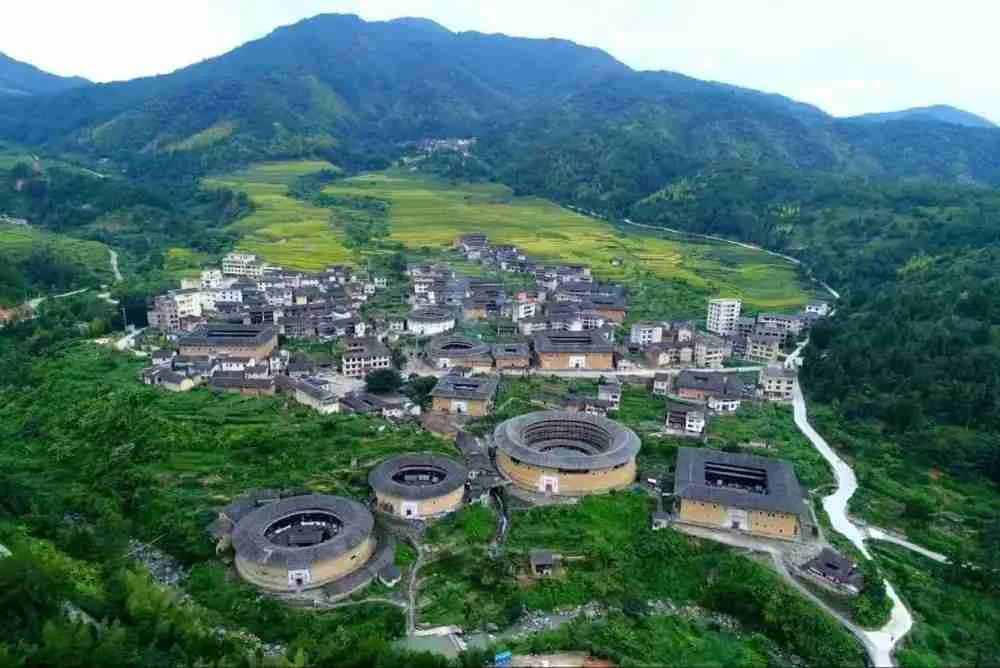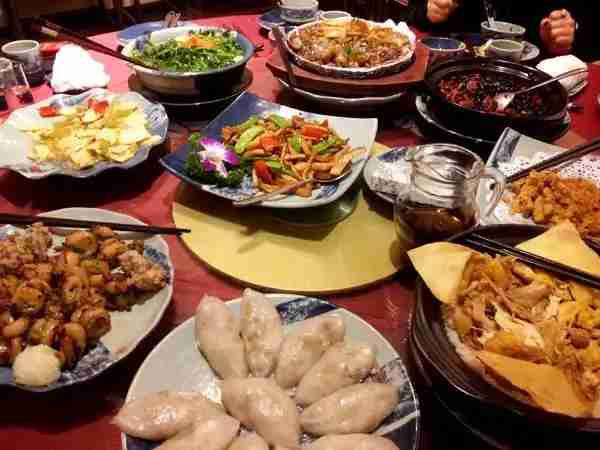The Hakka, who are also referred to as Hakka Chinese or the Hakka Han, is a subgroup of the Han Chinese. They have a reputation as the ‘Jews of China’ because they were largely isolated and developed their foods, customs, and language, as well as going through multiple discrimination events and being forced to migrate to different regions repeatedly throughout their history.
They are an interesting group of people, yet not much is known about them or their history. In this article, we look at some facts about them and why they have a separate identity from other Han groups in China, as well as their relations with other Chinese ethnicities.
Who are the Hakka Chinese?
The Hakka Chinese are a subgroup of the Han Chinese whose Chinese characters translate to ‘guest families’, and their ancestral homelands are mainly in the provincial regions of the island of Taiwan, Guizhou, Guangdong, Hunan, Hainan, Zhejiang, Fujian, Sichuan, Guangxi, and Jiangxi.
They are unique from other Han Chinese subgroups because they are not named after geographical places, such as cities, counties, or provinces within China. In terms of modern-day Hakka people, they speak the Hakka language, and you can identify them through different degrees of Hakka ancestry or full ancestry.
Hakka history

It is generally accepted that the Hakka origins are in the northern Chinese provinces, specifically Hubei and Henan. There have been genetic studies carried out on Hakka people, and results have shown they are descendants of the Northern Han Chinese people. Their settlement in southern China was due to migrations, and from there they spread out to the rest of the world.
They are unique due to their global spread – they are among the most prominent Chinese diaspora communities, numbering between 80 and 120 million people. They have extensive influence on the history of modern China as well as overseas Chinese histories, such as producing numerous military officials and government leaders. In 1984, for instance, Hakka people comprised more than 50% of the Standing Committee of the CCP (Chinese Communist Party) Politburo.
Hakka people’s migration from the north to the south of China happened during a time when earlier subgroups of Han Chinese already formed distinct languages and cultural identities from them. This is similar to what happened with the Chuanqing and Tunbao people, who are also Han Chinese subgroups that migrated to Southwest China from Eastern or Central China, and maintained unique ancestral customs that made them different from other Chinese people.
The origin of the Hakka
There was no specific group of people known as the Hakka – instead, it was a term generally used to refer to migrants. Their origins are unknown, but there are various theories about it coming from historians, linguists, and anthropologists:
- Their language has traits of the proto-Hmong-Mien language and Old Chinese
- In terms of genetics, they are mainly descended from a mix of local non-Han Hmong-Mien ethnic groups like the Yao, She, and Miao people and Ancient Han Chinese.
- They are Han Chinese who originate from the Central plains in China (these are present-day Henan and Shanxi provinces)
- The majority of Hakka people are southern Han Chinese mixed with some Northern people
- Hakka people are Han Chinese people from the Central Plains, mixed with some portions of people from the south
Some of these theories are controversial today, with scholars only accepting that the modern Hakka language shows traits of proto-Hmong-Mien and Old Chinese languages, as well as the genetic makeup of Hakka people being the hybrid of non-Han Hmong-Mien people and Ancient Han Chinese.
The homeland of the current Hakka people is believed to be in Northern China, and they began migrating to the south several times since the Qin dynasty ruled (between 221 and 206 BC). This was due to invasions, upheavals, and social unrest that forced them to migrate. Other migrations happened at the end of the Tang Dynasty and the Northern Song dynasty in the 1120s.
The 1120s migration occurred when the Jurchen people, a group of nomads from the north, captured Bianliang (the capital of the Northern Song dynasty) during the Jin-Song wars.
The Hakka migration routes are unclear after this, but history records that they happened during the 14th Century again after the Yuan dynasty was overthrown by the Ming dynasty. In the 16th Century, Hakka people migrated again to hilly areas for lead and zinc mining, as well as the coastal regions to farm cash crops in response to an economic boom. However, many of their ventures failed due to an economic downturn, forcing many of them to begin pillaging.
They were forced to evacuate the coastal plains during the reign of the Qing dynasty’s Kangxi Emperor (between 1661 and 1722) due to an imperial edict, and this lasted almost a decade. This was because the remaining members of the Ming court fled to Taiwan, and posed a danger to the Kangxi Emperor. After the threat was gone, the Emperor allowed the Hakka to resettle into the coastal regions by providing them with money, as well as registering newcomers as ‘Guest Households’.
During the 1600s when it was illegal to leave China, many Hakka people also emigrated to Taiwan from the southern China coast as they were escaping poor soil, oppression, and overpopulation – especially those living in the rugged hilly regions of northeast Guangdong.
Since they were outnumbered, they formed tight-knit communities, especially in two areas – the southern Taiwanese areas of Pingtung County and Kaohsiung County, and the northwest areas of Miaoli county, Hsinchu county, and Taoyuan City.
The unique cultural characteristics of the Hakka people

In many ways, the Hakka cultural identity is not as different from their Han subgroup relatives, but distinct differences still exist. These include:
Their intense devotion to their community, clan, and family. This is due to their unfortunate history of continually being ostracized and outnumbered by other groups they encountered.
Their business acumen and frugality, are due to their forced migrations. Settling in stubborn land and harsh conditions forced them to develop strong business ideas, which led to a reputation of dealing with money issues.
Unlike most women of the time, Hakka women’s feet were unbound. This was because their help was essential to fighting for food in the fields, and they needed to escape as quickly as possible in case of attacks.
They emphasized the importance of education due to being discriminated against and shut out of ‘flatland’ economic activities. This also led to their prominence in imperial circles, as this protected them from harassment from other people. They also set aside money and community resources to educate the brightest and most promising members of their community, usually male, although basic literacy for both men and women was common.
What is the Hakka language?
The Hakka language is a variant of the Sinitic (Chinese) languages and spoken by Hakka people in Taiwan, mainland China, and diaspora communities in Southeast Asia, East Asia, and around the world.
Since its usage is in scattered regions and is limited to where populations of Hakka people live, it has developed numerous dialects depending on where the speakers are based. These varieties include those from Indonesia, Malaysia, Singapore, Taiwan, Guizhou, Hunan, Guangdong, Jiangxi, Sichuan, Fujian, Hainan, and Guangxi.
Hakka is entirely distinct from other Sinitic languages and is not mutually intelligible with them – including Mandarin, Yue, Southern Min, and Wu. Its closest relation is with Gan, and linguists sometimes group Gan and Hakka as different varieties of the same language.
Taiwan is a major center for the study of the Hakka language today, although there are differences between the dialects of Mainland China and Taiwanese Hakka. According to the Mainland Chinese Government, they consider the Moiyen (Meixian) dialect that is based in northeast Guangdong as the ‘standard’ Hakka dialect.
As a language, Hakka is more conservative than other Sinitic languages, with some of its features being closer to Middle Chinese. It has several archaic features that disappeared from modern Mandarin, such as the addition of final consonants -k, -t, and -p, similar to the Cantonese language and other southern China languages. The language also has influences from other languages due to Hakka migrations, with common vocabulary present in She, Min, and Hakka languages.
Some Hakka dialects are not mutually intelligible, although they belong to the same language group. The tones also vary, with most Hakka dialects having 6 tones. Some dialects also lack checked tones, like the western Fujian dialect Changting. Other dialects retain earlier tonal systems, such as Lufeng and Haifeng in southeast Guangdong province.
In Taiwan, there are two Hakka variants: Hailu, which is based in Lufeng and Haifeng counties, and Sixian which originates in Jiaying Prefecture. In general, the Hakka dialects are agreed as:
- Tonggu
- Yugui
- Ning-Long
- Tingzhou
- Yuebei (based in Northern Guangdong)
- Huizhou
- Yuezhong (based in Central Guangdong)
- Yue-Tai (comprised of Meizhou, Raoping, Meixian, and Wuhua)
Hakka food

In terms of ingredients, Hakka foods use similar ingredients to those in the Han-majority areas, which is proof of the strong ties to Han culture. However, there are unique points in flavoring methods and cooking techniques, making their food a testament to their survival skills in harsh areas and adaptation to environmental changes.
The unique traits of Hakka cuisine worth noting are:
- Emphasis on mountain delicacies instead of seafood. For most of their history, Hakka people lived in mountainous regions, so it was more natural to consume mountain delicacies instead of fish and seafood.
- There is little regard for food presentation and instead focuses on the ingredients. Most Hakka dishes do not consider the food’s presentation, which shows their practical nature and shunning of showmanship.
- Instead of adding flavorings, their food emphasizes the original taste. The dishes are uncomplicated, which leads some people to believe this is how they showed individual taste. However, many researchers believe that the lack of flavors was a result of Hakka people living in isolated mountainous areas, so they were away from the cuisine influences of people living near the sea.
- Their dishes are high in protein and calorie content, as they needed to keep up their physical strength during their migration periods. This meant that the dishes retained their original taste, but were quite salty to add flavor.
- Rice cakes are made from glutinous rice instead of the japonica or indica rice of mainland China. This resulted in very filling foods that gave a sense of fullness, and these cakes were stuffed with meat, shallots, and dried radish in large portions.
- Tea culture is dominant, especially pestle tea and green tea.
Unique cooking techniques used by Hakka people
- Niang – this translates to ‘stuffing’ in English. As their food needed to be dense and filling, they created the stuffing of vegetables and pork into alternative food materials. Some of their most famous stuffed dishes include stuffed tofu and stuffed bitter gourd.
- Ban – This means ‘mixing with rice’, and is a cooking technique of their staple meals, which they refer to as ‘Ban’. The dish is made from tapioca flour, glutinous rice powder, or rice flour, and mixed with vegetables to create Ban food. There are more than 200 varieties of Ban food, with the most common types including stuffed ban, fried Chinese bulbous onion ban, and wormwood ban.
- Dry – During the migration of the Hakka people, their vegetables and meat tended to rot, so they preserved them by drying them under sunlight. They have eight famous dry foods in their cuisine – dry bamboo shoots, dry meat, dry sweet potato, dry pig gall, dry carrot, dry bean curd, dry field mouse, and dry vegetables.
- Pickling – Hakka foods emphasize pickled dishes, as they are needed to promote preservation during travel. This also leads to their saltier taste, compared to other cuisines in the country. Some classic ingredients originated from this technique, such as sour pickled cabbage, soy-preserved radish, sour bacon, soybean paste, and fermented mustard.
Additionally, they use other techniques such as braising, roasting, and stewing, which retain the nutritional value of their food.
Conclusion
The Hakka people have a difficult history due to oppression and frequent migrations, but these events led them to what they are today – an innovative culture that makes them distinct from their Han Chinese cousins and other Chinese people.
I am a Moyen Hak. I was born in Medan, came to the USA for college, then decided to remain in the USA due to oppressions in my country of birth. My Dad was born in Singkawang, my Mom was born in Muntok, Bangka. At home, we spoke Hak Fa. Among friends, I spoke Hokkien.
ancient chinese language
Pingback: MYTHOLOGIES OF THE HAKKA TRIBE – World Mythology